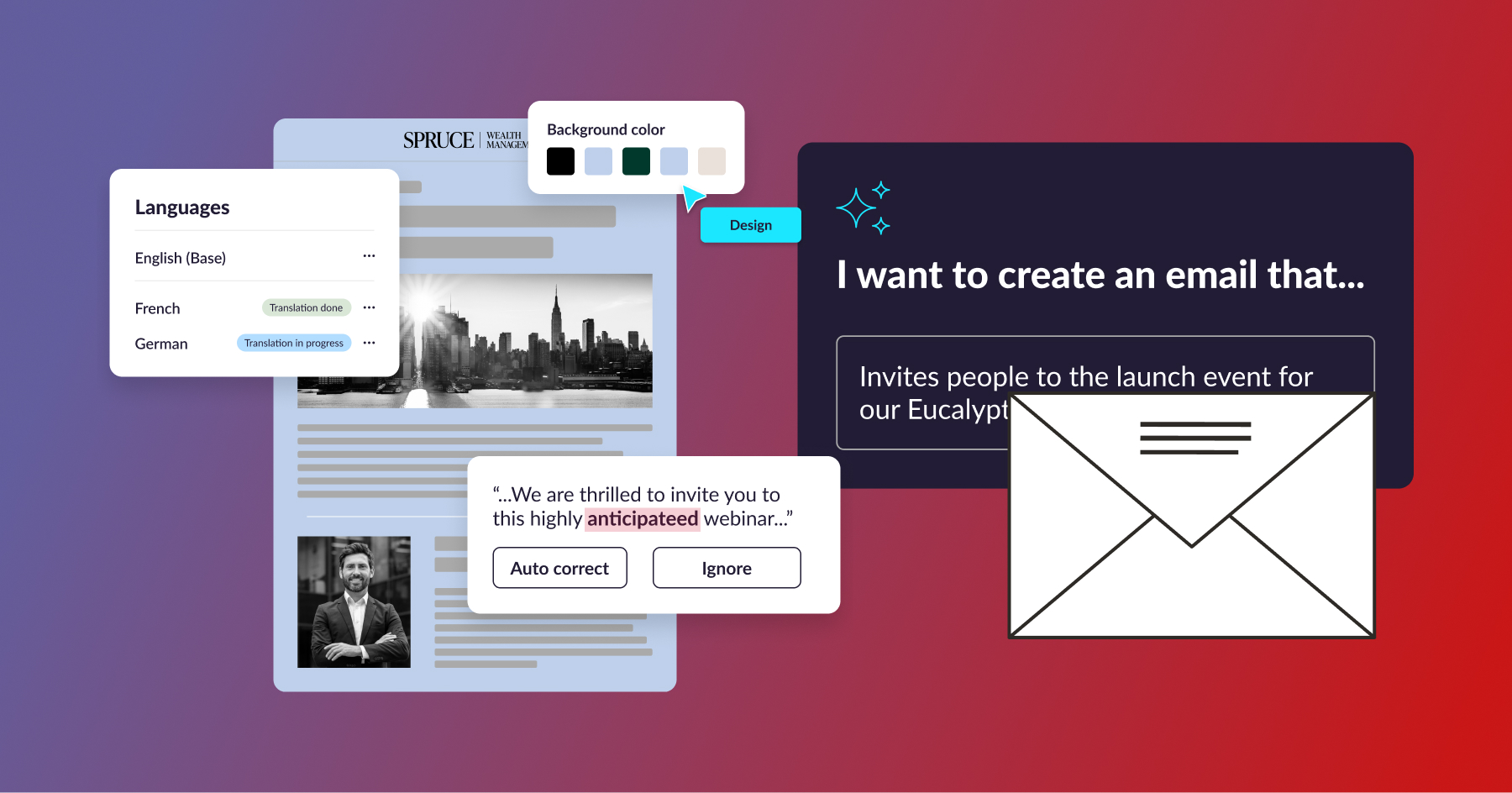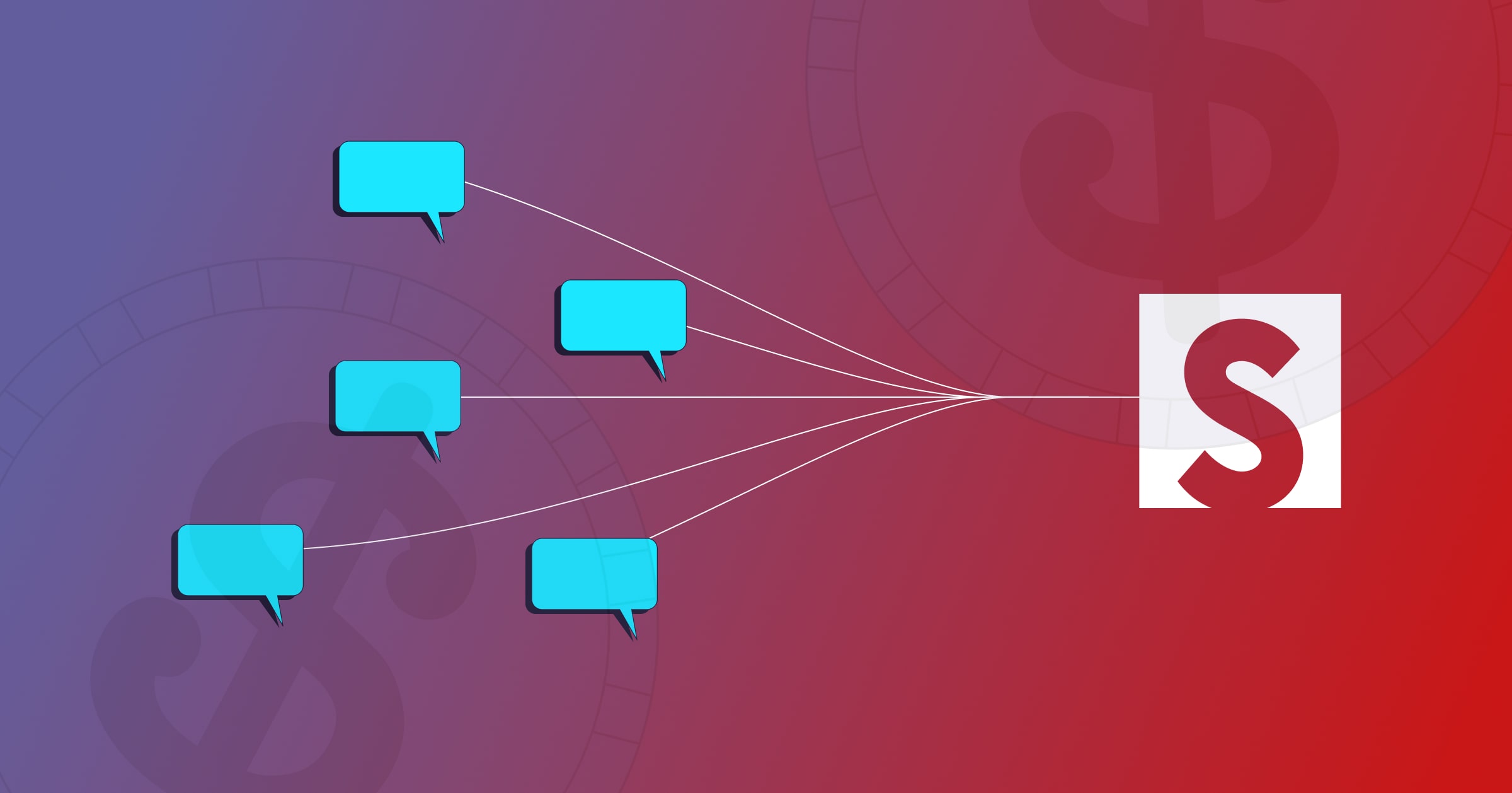If you’re like many email creation teams, you spend 90% of your time on creation itself — writing and editing copy, designing images, and making sure the email’s layout is correct — and only 10% on strategy like A/B testing. If you find yourself wondering how you got here in the first place, there’s one major issue to consider: It is very likely the wrong people are building your emails.
What an ineffective creation model looks like
Let us know if this sounds familiar: Your organization is launching a new marketing campaign. If all goes well, it should bring in a significant ROI for next quarter. A marketer will then request a series of emails to go along with the campaign. They’ll dictate objectives to copywriters and designers, setting off the long, arduous chain of back-and-forth communication as the creatives then try to interpret the requesters’ asks, continuously modifying their work as needed.
It’s likely that this communication chain happens via email or a Slack channel, and it can take hundreds of hours from ideation to deployment. While it seems intuitive that members of the central creation team– the copywriters and designers– should be the ones creating emails, unfortunately, this model is outdated, time consuming, and costly. It’s a descendent of direct mail, and doesn’t take advantage of the agility that technology can bring into organizations.
When utilizing the right software, requesters should be able to create emails themselves. Yep, you heard correctly: Requesters can be building most emails at your company.
What is a hybrid model, and how will it help?
If you happen to be one of these requesters, your initial reaction to a statement like the one above might be, “Wait a minute, I don’t have time to build emails. That’s why we hired designers and copywriters!” Not to worry — building emails won’t actually cost you more time if you utilize the right technology. In a hybrid model, requesters can submit a brief to the central team, which central teams can then build from quickly and easily with the existing in-platform modules. Requesters are then alerted and can review and easily make any edits directly within the platform. Strict guardrails will be enforced for the requesters, so requesters and copywriters alike don’t have to worry about breaking the code or going off-brand. Once finished, the central team can approve and deploy via the ESP or MAP. At stensul, we call this the hybrid method.
Without all of the initial back and forth between requesters and the central team, hours are shaved off of your email creation process, and there’s less room for error all around.
But what about emails that require a high level of design and oversight?
The hybrid method works for a majority of emails, but not all of them. Some emails will require higher visibility and more technical design, which will naturally lead to more needed approvals. These higher visibility emails – we call them “centralized” – are still able to be created within a strong email creation platform. The important takeaway is that not every email will require this level of work and attention. When centralized emails make up 20% of your workflow, rather than 100%, all members of your team are able to focus on higher priority tasks, and slash your email creation time by 90%.
If you want to save time and make sure everyone on your creation team is making the most of their time and particular skill sets, you need to invest in an agile tech solution. Stop relying on your central team to build every single email – schedule a demo with a stensul platform expert and give your team their nights and weekends back.

